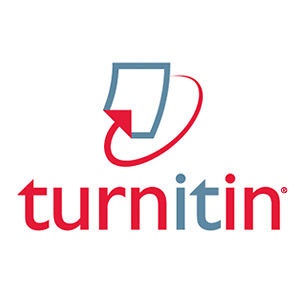APPLICATION OF HALAL VALUE CHAIN MANAGEMENT PRINCIPLES IN BAKERY AND CAKE AT PADANGSIDIMPUAN CITY
Abstract
Abstract
Not only does Halal certification provide superior legal protection for Muslim consumers' rights to non-halal products, but it also increases the selling value of business actors' products because consumers are more willing to buy goods from them. Inconsistencies in the halal value chain will result from the use of different local halal value chain standards, particularly logistics that are not aligned with international halal logistics standards. The purpose of this study is to explain the application of halal value chain management to processed bakery and chake products in Padangsidimpuan City using an empirical descriptive approach. The following processes are included in the implementation of halal value chain management for halal-certified bakery and chake products in Padangsidimpuan City: a. purchasing, b. acceptance, c. production, d. warehousing, e. distribution, and f. the product is not used up. That the majority of bakery and chake businesses have implemented halal value chain management in their operations. Furthermore, all stakeholders in the halal certification process receive valuable input.
Keywords
Full Text:
PDFReferences
Ali, M. (2016). Konsep makanan halal dalam tinjauan syariah dan tanggung jawab produk atas produsen industri halal. AHKAM: Jurnal Ilmu Syariah, 16(2), 291-306. https://journal.uinjkt.ac.id/index.php/ahkam/article/view/4459/0
Ali, M. H., & Suleiman, N. (2018). Eleven shades of food integrity: A halal supply chain perspective. Trends in Food Science and Technology, 71(December 2017), 216–224. https://doi.org/10.1016/j.tifs.2017.11.016
Anwar, S. (2011). Manajemen Value chain(Supply Chain Management) : Konsep Dan Hakikat. Jurnal Dinamika Informatika, 3(2), 92–98. https://doi.org/10.35315/informatika.v3i2.1315
Behrenbeck, K., Thonemann, U., & Merschmann, U. (2007). Soft secrets of supply chain success. International Commerce Review--ECR Journal, 7(2). https://www.researchgate.net/publication/225669467
Busyra, S. H. I., & Ardi, R. (2020, June). A preliminary findings of risk categories in halal supply chain in Indonesia: Upstream level of meat industry. In Proceedings of the 3rd Asia Pacific Conference on Research in Industrial and Systems Engineering 2020 (pp. 260-265). https://doi.org/10.1145/3400934.3400982
Hosen, M, N. (2008). Panduan Umum Sistem Jaminan Halal LPPOM – Mui. Lembaga Pengkajian Pangan Obat-Obatan Dan Kosmetika, MAJELIS ULAMA INDONESIA, 1–36.
Khairil Anwar, Y., Mardziah, H. & Nor Laila, MN 2006. 'Memodelkan Sistem Pendukung Evaluasi Diri Produsen untuk Sertifikasi Halal'. Prosiding International Conference on Business IT 2006 Collaborating with ICT Innovations for Business Survival. Kuala Lumpur
Noordin, N., Nor, L.M.N., Mardziah, H., & Zainal, S., Valie Chain of Certification System : a Case of the Malaysia Halal Industri, European and Mediterranean Cobference on Information Systems 2009 (EMCIS2009).
Lada, S., Harvey T, G., & Amin, H. (2009). Predicting intention to choose halal products using theory of reasoned action. International Journal of Islamic and Middle Eastern Finance and Management, 2(1), 66–76. https://doi.org/10.1108/17538390910946276
Maman, U., Mahbubi, A., & Jie, F. (2018). Halal risk mitigation in the Australian–Indonesian red meat supply chain. Journal of Islamic Marketing, 9(1), 60–79. https://doi.org/10.1108/JIMA-12-2015-0095
Min, S., Zacharia, Z. G., & Smith, C. D. (2019). Defining Supply Chain Management: In the Past, Present, and Future. Journal of Business Logistics, 40(1), 44–55. https://doi.org/10.1111/jbl.12201
MUI, L. (2021a). halalmui.org. https://www.halalmui.org/mui14/
Peraturan Pemerintah Republik Indonesia Nomor 69 Tahun 1999 tentang Label dan Iklan Pangan
Ramlan dan Nahrowi, “Sertifikasi Halal Sebagai Penerapan Etika Bisnis Islami Dalam Upaya Perlindungan Bagi Konsumen Muslim, ”Jurnal Al-Ahkam, Volume 14, No. 1, Januari 2014.
Salindal, N. A. (2019). Halal certification compliance and its effects on companies’ innovative and market performance. Journal of Islamic Marketing, 10(2), 589–605. https://doi.org/10.1108/JIMA-04-2018-0080
State of the Global Islamic Economy. (2021). State of the Global Islamic Economy Report 2020/2021. Dubai International Financial Centre, 112. https://haladinar.io/hdn/doc/report2018.pdf
Supian, K. (2018). Cross-contamination in processing, packaging, storage, and transport in halal supply chain. In Preparation and Processing of Religious and Cultural Foods (Issue 2014). Elsevier Ltd. https://doi.org/10.1016/B978-0-08-101892-7.00016-X
Tieman, M., Van der Vorst, J. G., & Ghazali, M. C. (2012). Principles in halal supply chain management. Journal of Islamic Marketing. 3(3), 217–243. https://doi.org/10.1108/17590831211259727
Undang-Undang Republik Indonesia Nomor 33 Tahun 2014 tentang Jaminan Produk Halal
UUJPH. (2014). Undang – Undang Republik Indonesia U No. 33 Tahun 2014 tentang Jaminan Produk Halal. Igarss 2014, 1, 1–5.
Vanany, I., Soon, J. M., Maryani, A., & Wibawa, B. M. (2020). Determinants of halal-food consumption in Indonesia. Journal of Islamic Marketing, 11(2), 516–530. https://doi.org/10.1108/JIMA-09-2018-0177
Wieland, A. (2021). Dancing the Supply Chain: Toward Transformative Supply Chain Management. Journal of Supply Chain Management, 57(1), 58–73. https://doi.org/10.1111/jscm.12248
Yaacob, T. Z., Suzana Jaafar, H., & Rahman, F. A. (2016). A Review of Regulatory Framework for Halal Meat Supply Chain: The Case of Halal Meat Based Food Products in Malaysia. J. Appl. Environ. Biol. Sci, 6(9S), 14–21. https://www.researchgate.net/publication/350853822
DOI: https://doi.org/10.24952/masharif.v11i1.6807
Refbacks
- There are currently no refbacks.
Copyright (c) 2023 Al-Masharif: Jurnal Ilmu Ekonomi dan Keislaman

This work is licensed under a Creative Commons Attribution-ShareAlike 4.0 International License.

Plagiarism Checked by:





